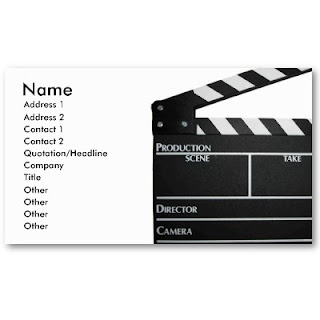Famous iconic Costume Designers and the roles they play in Fashion and Films-
The Costume designer is the person who designs costumes for a film or stage production. He or she forms an important part of the "production team," alongside the director, scenic and lighting designers. Costume design is the design of the appearance of the characters in a theater or cinema performance which potrays the real character of the actor. This usually involves designing or choosing clothing for the actors to wear, but it may also include designing masks, makeup or other unusual forms.
Costume designers try to enhance a character's personality to potray the various social and cultural context through the way that character is dressed, while at the same time giving space to the actor to move and perform actions and show emotions as required by the script. The designer needs to possess a keen eye , strong artistic capabilities and a thorough knowledge of fashion history.
Famous Costume Designers in Films-
Cecil Beaton - My Fair Lady, Gigi
Jenny Beavan - Howards End, Sense and Sensibility
John Bright - Howards End, Sense and Sensibility
Milena Canonero - Out of Africa, Titus Ngila Dickson - The Lord of the Rings: The Return of the King, The Last Samurai
Danilo Donati - Romeo and Juliet
Edith Head - Sabrina (1954), The Sting
Jenny Beavan - Howards End, Sense and Sensibility
John Bright - Howards End, Sense and Sensibility
Milena Canonero - Out of Africa, Titus Ngila Dickson - The Lord of the Rings: The Return of the King, The Last Samurai
Danilo Donati - Romeo and Juliet
Edith Head - Sabrina (1954), The Sting
Dorothy Jeakins - The Sound of Music
Jean Louis - From Here to Eternity
Orry-Kelly - Gypsy
Jean Louis - From Here to Eternity
Orry-Kelly - Gypsy
Cecil Beaton - My Fair Lady, Gigi
Walter Plunkett - Gone with the Wind, Singin' in the Rain
Sandy Powell - The Wings of the Dove, Shakespeare in Love
Ann Roth - The English Patient
Irene Sharaff - Call Me Madam, Guys and Dolls
Theodora van Runkle - Bonnie and Clyde
Sandy Powell - The Wings of the Dove, Shakespeare in Love
Ann Roth - The English Patient
Irene Sharaff - Call Me Madam, Guys and Dolls
Theodora van Runkle - Bonnie and Clyde
Costume Designers With Profound Effect on Film
Adrian (costume designer)- The Wizard of Oz
Adrian, was an American costume designer who became famous for his costumes for The Wizard of Oz and other Metro-Goldwyn-Mayer films of the 1930s and 1940s. During his entire career, he designed costumes for over 250 films and his screen credits usually read as "Gowns by Adrian". Adrian was hired by Rudolph Valentino's wife Natacha Rambova to design costumes for A Sainted Devil in 1924. He also designed for Rambova's film, What Price Beauty? (1925). Adrian became head costume designer for Cecil B. DeMille's independent film studio. Adrian was hired as chief costume designer at the studio. Adrian worked at MGM. In that studio during his career , Adrian designed costumes for over 200 films.
Edith Head(Costume Designer)-The Sting
Edith Head was a known and legendary Hollywood costume designer .She dressed the silent film stars of the 1920s, designed the dress of the Hitchcock blondes, She made Audrey Hepburn into a princess and put Princess Grace into the frame of GOLDEN GIRL: Edith Head won eight Oscars during her career of over 50 years as a costume designer.She was the costume designer for various well known films that include The Heiress (1949), Samson and Delilah (1950), All About Eve (1950), A Place in theSun (1951), Roman Holiday (1953), Sabrina (1954), The Facts of Life (1960) and The Sting (1973).In fashion, Head was truly competitive . Her career is emnamoured with well known achievements. "Accentuate the positive and camouflage the rest," was the spirit behind famous Edithism.
Patricia Field(Costume Designer)-Sex and the city
Patricia Field, is an American costume designer, stylist and fashion designer. Field's was a well known costume designer for Sex and the City, the show became famous for the fashions it showcased. Field was nominated for 5 Emmy Awards for her work on sex and city. She was nominated for 6 Costume Designers Guild Awards. She is one out of six Honorees of the 2008 Reel Time Film Festival. She went on to return as Costume Designer for the movie "Sex and the City’ (2008) and the sequel "Sex and the City 2" (2010). Field has worked in the Asian market also by creating the fashion. She has served as a costume designer for the feature film The Devil Wears Prada, for which she was nominated for an Oscar for Best Costume Design.

































